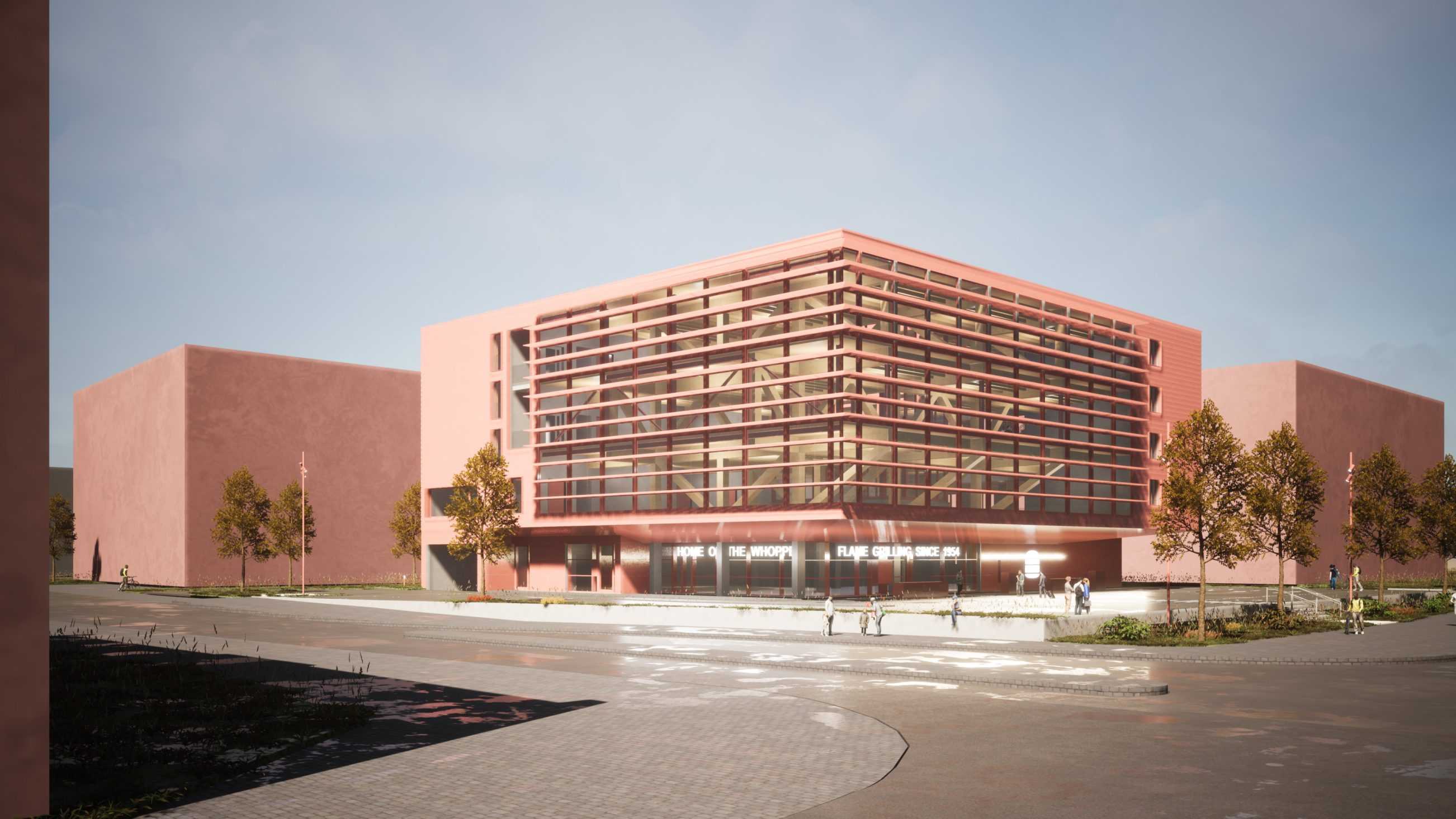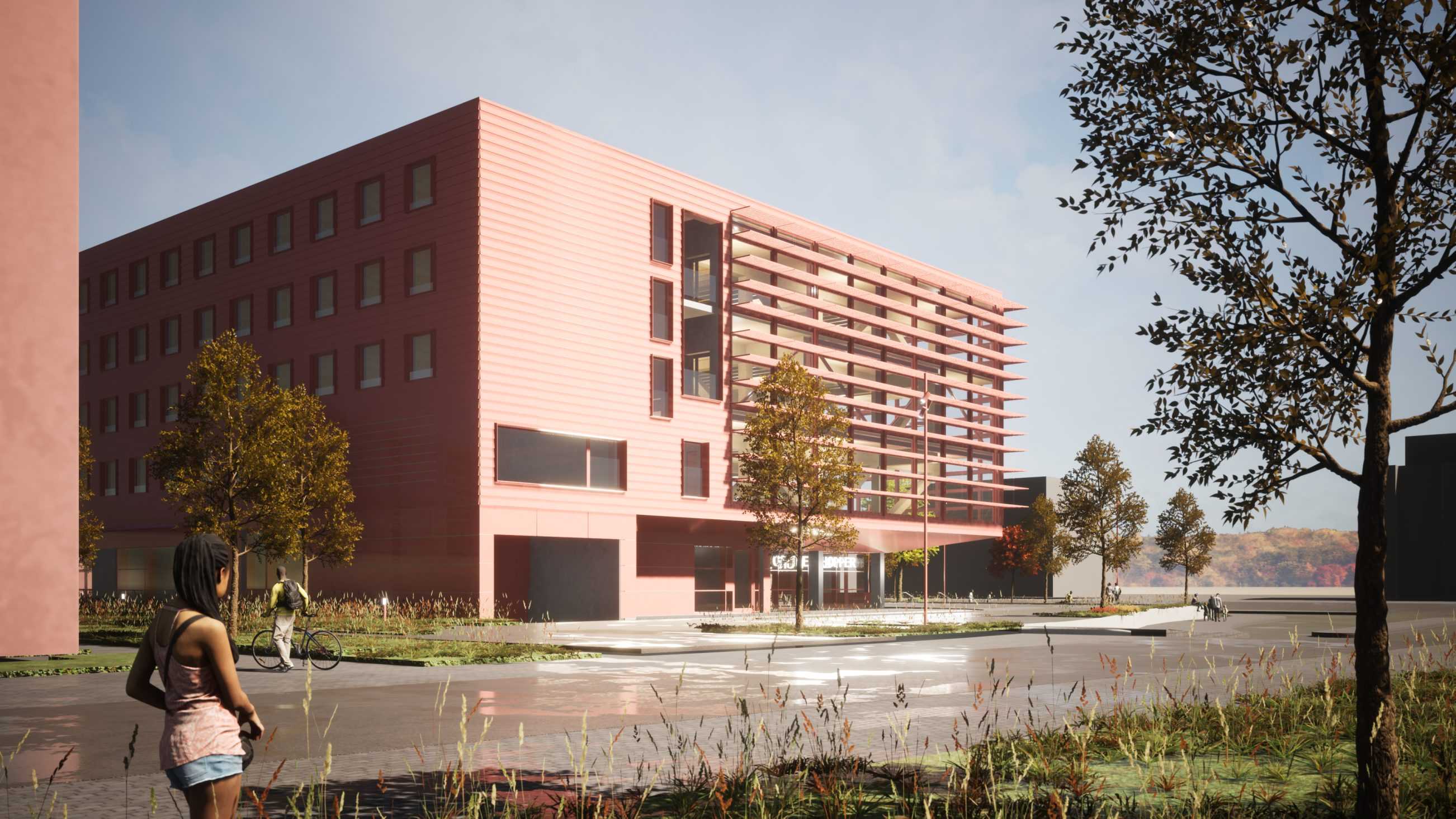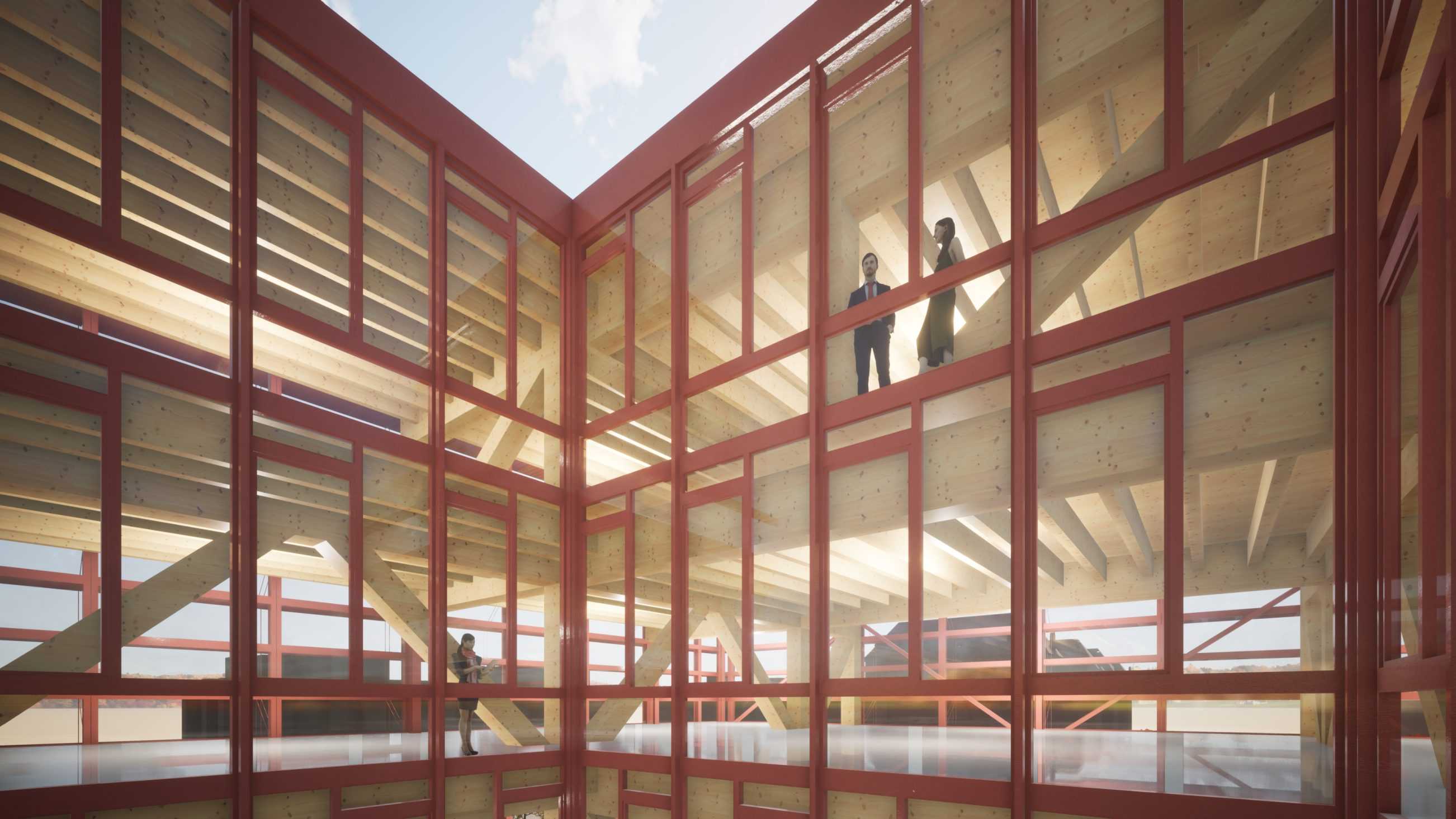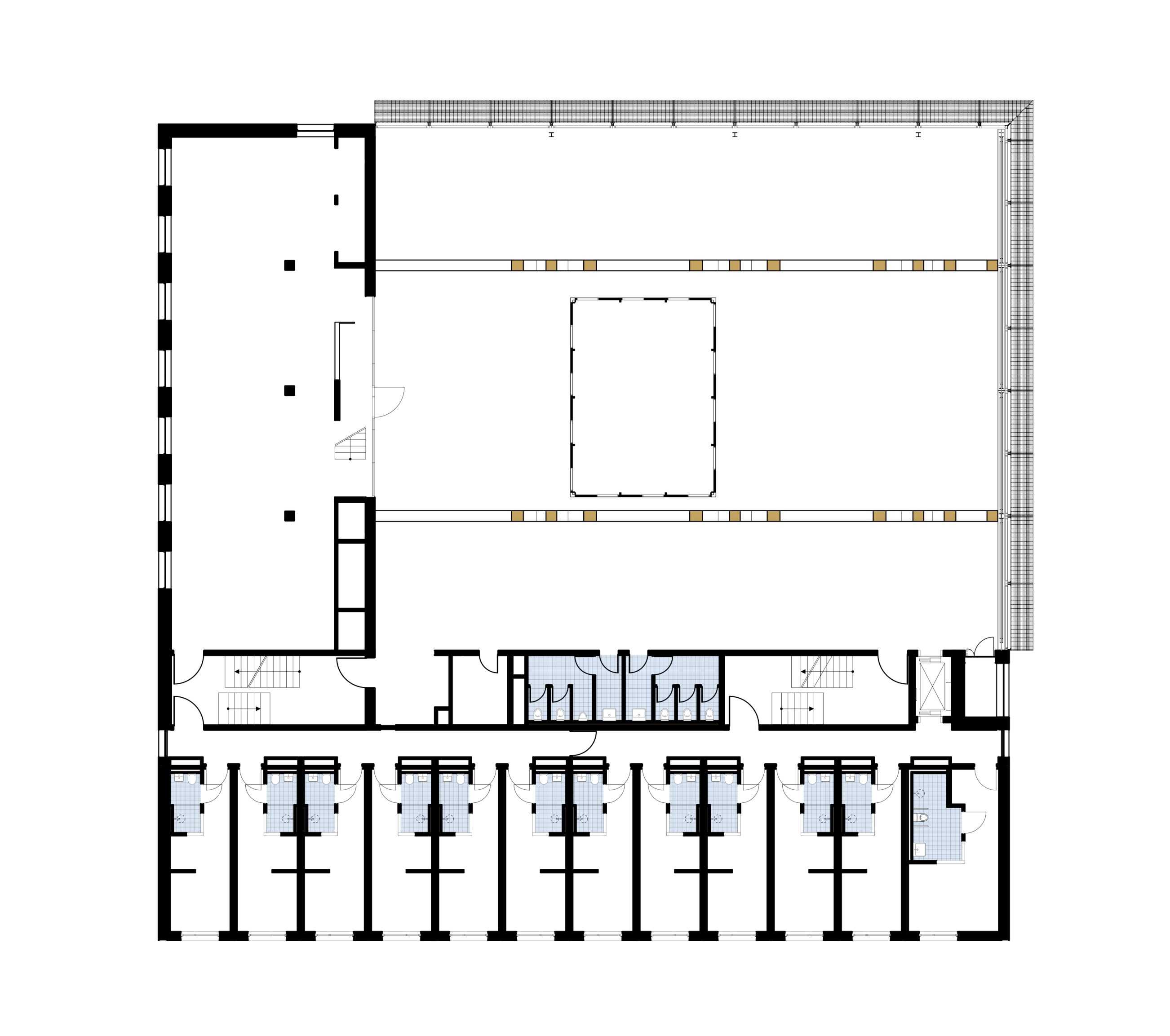
Hotel Urban Loft
TYPOLOGY: Hotel
COUNTRY: Germany
CITY: Cologne
YEAR: 2020
Competition: –
GFA: 10.000 m2
CLIENT: EHBB Verwaltungsgesellschaft mbH & Co. KG
USER: Althoff Hotels
USE: Hotel with 213 rooms, restaurant, underground parking, 8 apartments
PHOTOS: © Roman Mensing, BOLLES+WILSON
Young creative digital natives arriving at Cologne’s Central Station need now only to duck around the corner to spend time in URBAN LOFT – a new brand by Althoff Hotels. BOLLES+WILSON’s responsibility was the form + language of the building – a textile like street façade (Eigelstein) of warm vertical brick. The former brewery site in one of Cologne’s most traditional neighbourhoods is squashed up against railway tracks. Sound proof windows gaze at the cathedral spires + into the posterior of the station – trains rush past, only 1m from the rear façade. Also at the rear (Am Salzmagazin) stacked apartments watch this urban opera. Following a planners invective a neighbourhood networking is achieved with a passage passing internal terraces + squeezing out in the atmospheric underpass.
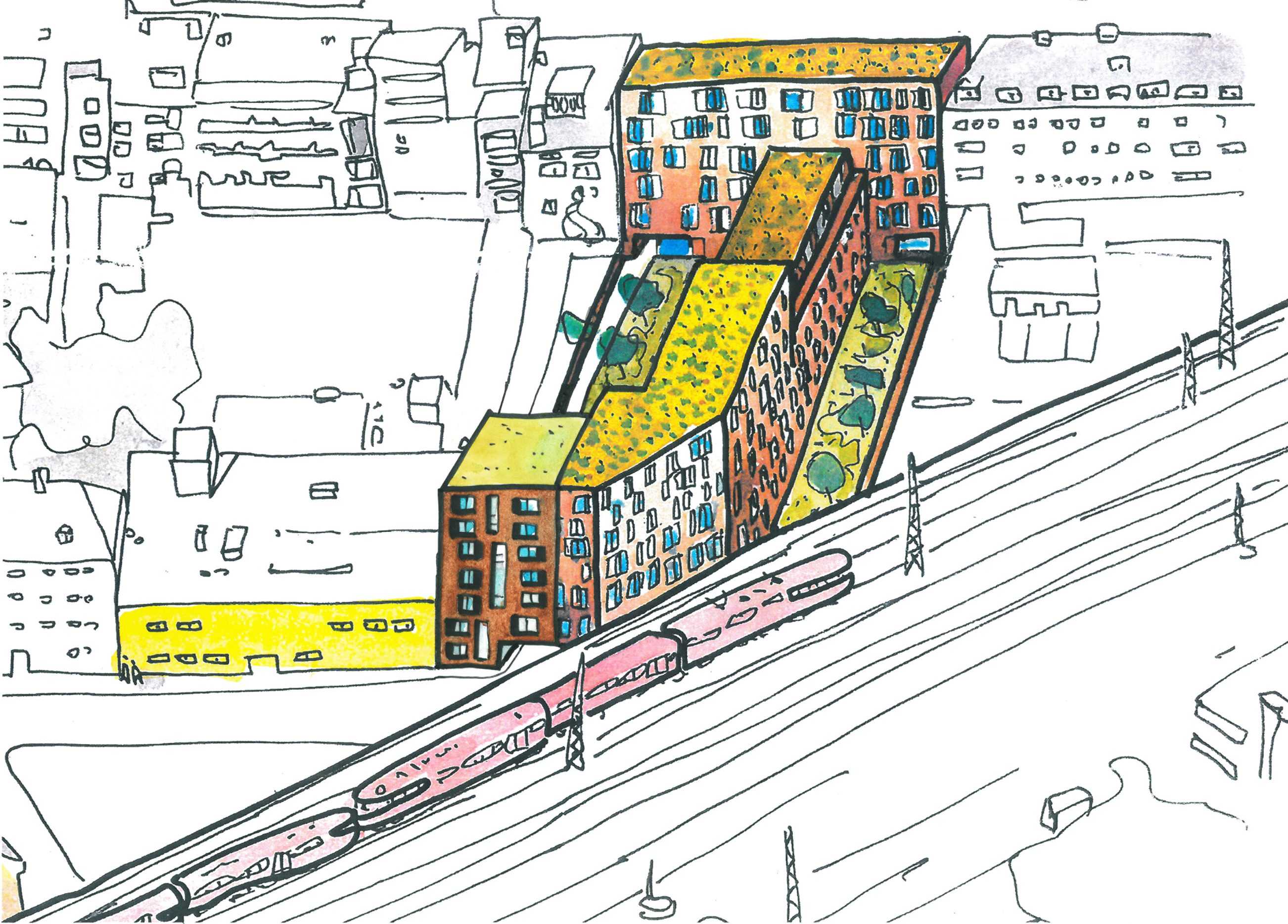




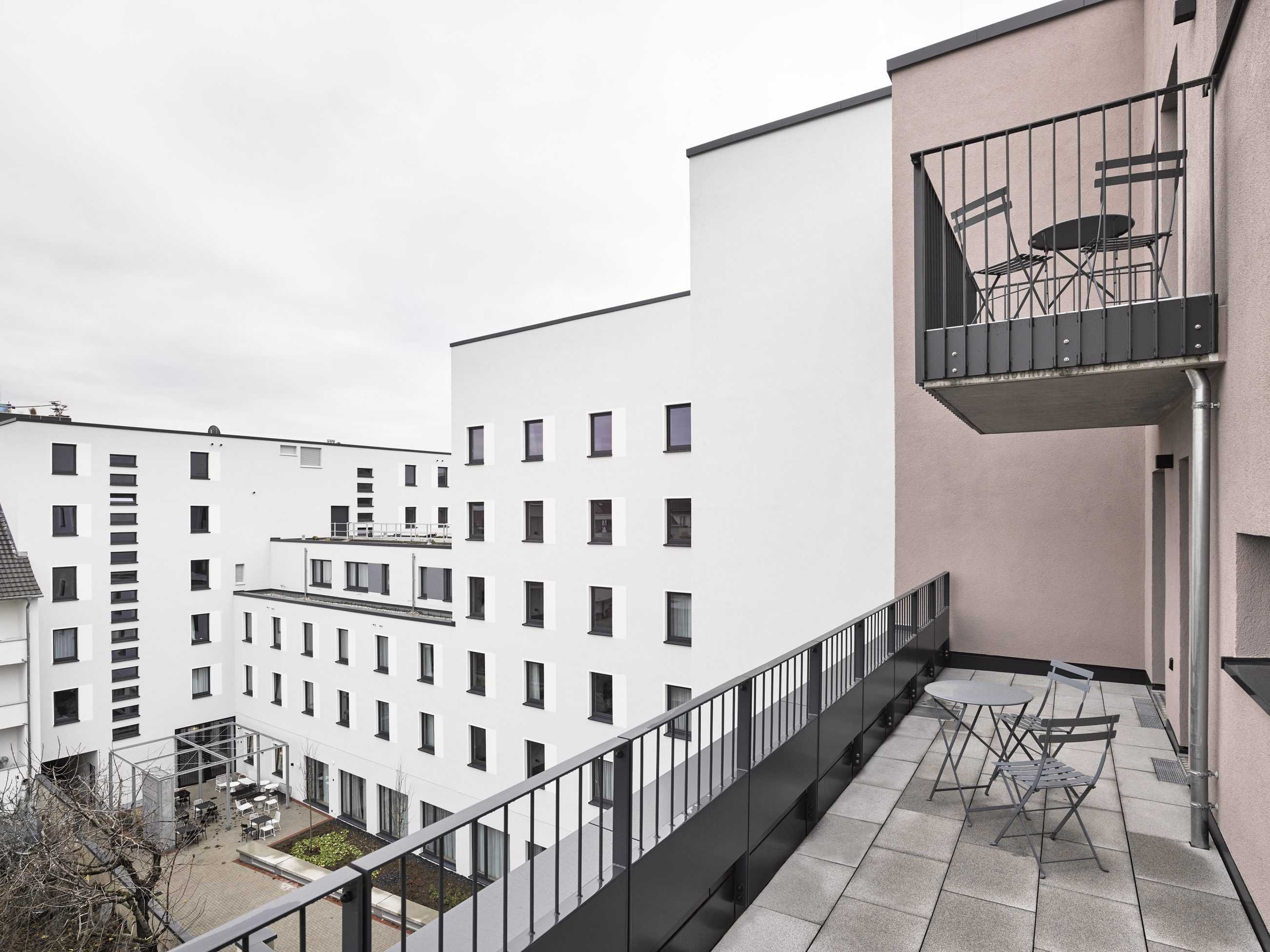


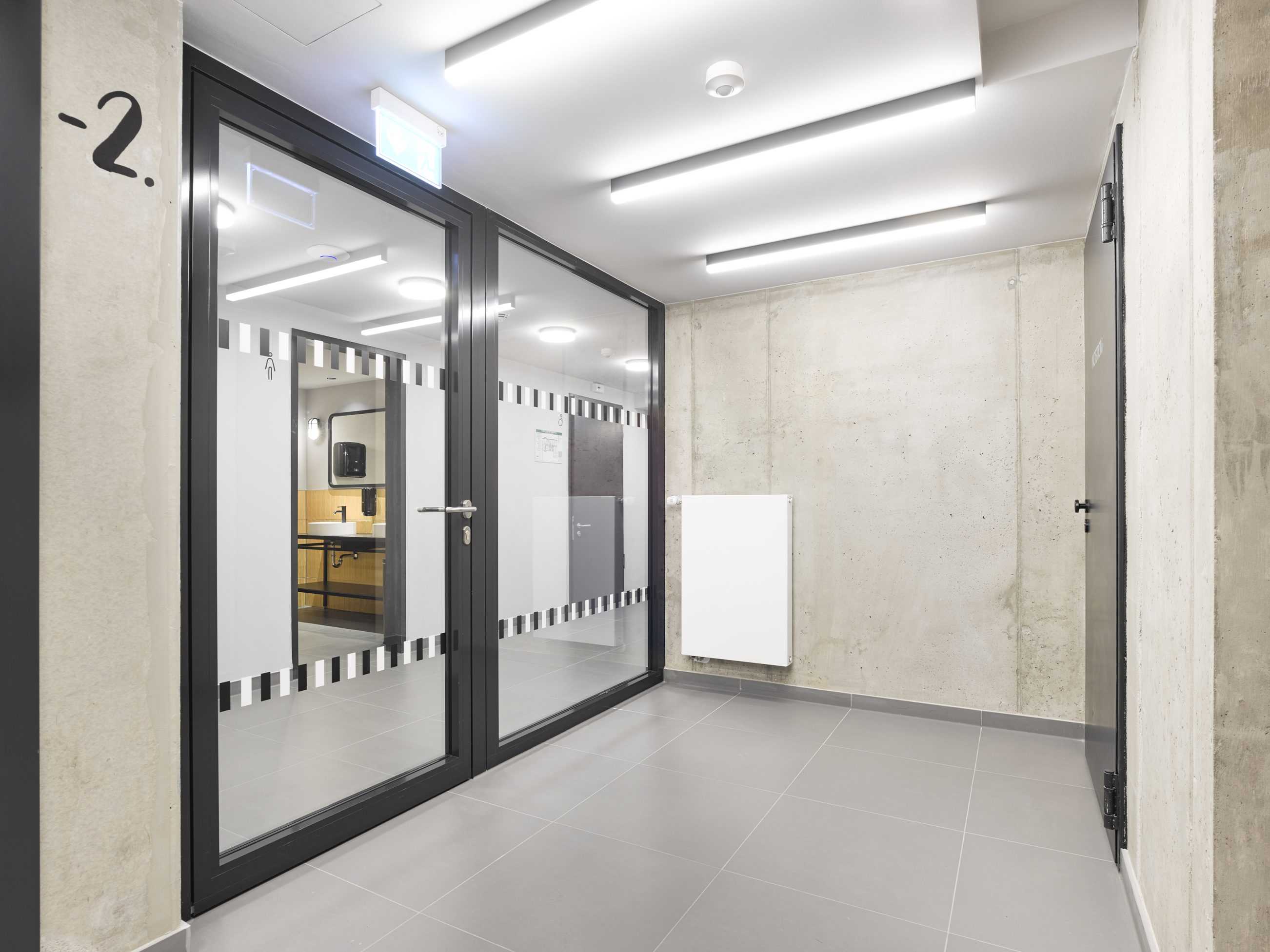
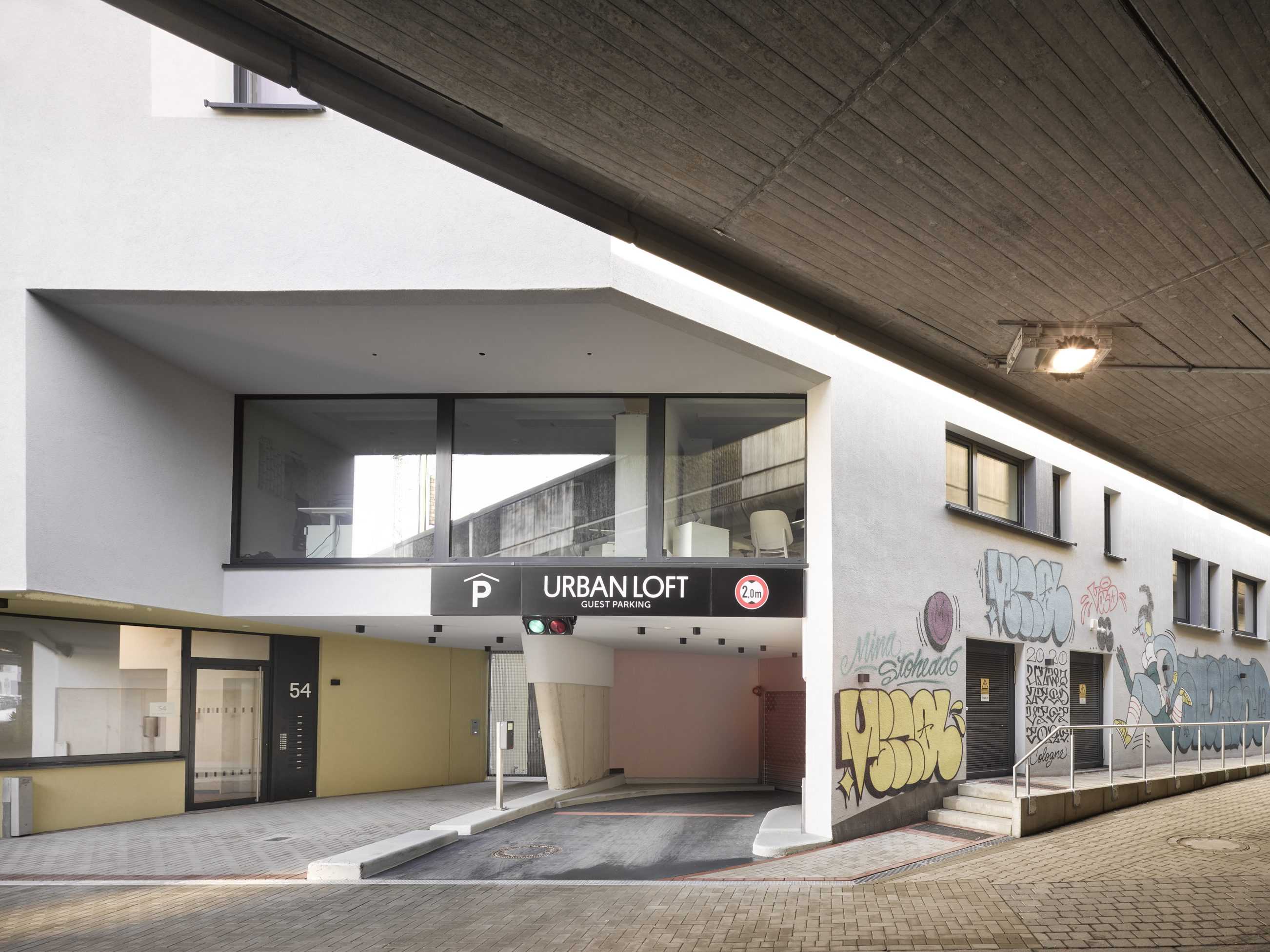


BnL Bibliothèque nationale du Luxembourg
TYPOLOGY: Cultural
COUNTRY: Luxemburg
CITY: Luxembourg (Kirchberg)
YEAR: 2019
COMPETITION: 2003, 1st prize
GFA: 38.200 m2
CLIENT: Le Gouvernement du Grand-Duché de Luxembourg / Ministère de la Mobilité et des Travaux publics
COLLABORATOR: cooperation with local office: WW+ architektur + management sàrl (tender + construction management)
AWARD: 2021 DAM Prize for Architecture in Germany, category Buildings Abroad (Shortlist)
PHOTOS: © Christian Richters
PHOTOS MODEL: © Tomasz Samek
PHOTOS CONSTRUCTION: © Administration des bâtiments publics / Bibliothèque nationale du Luxembourg + BOLLES+WILSON
The task of the Patrimonial and Universal Library is the housing and protection of Cultural and Intellectual Texts – a foundation stone of the intellectual community. For the BnL a compact, energy efficient building volume houses a wide range of functional entities.
A transparent imposing, but at the same time inviting, facade fronts onto the Avenue John F. Kennedy. Internal functions unfold sequentially from this entrance gesture; Foyer +, Café (with upper level conference + seminar rooms), next the Reading Room – a landscape of terraced workstations and bookshelves. The principle building block is located deep within the building, a central and compact archive over five levels. This secure core is encased by public spaces and forms a plateau on top of which the largest bookshelf area and reading-deck is found.
The principle facade material is large format red pre-cast concrete panels – a patchwork due to a variety of surface treatments (water/sand-jeting, acid washing). The architectural intention is homogeneity, a material unity of the overall building volume, with an undercurrent of surface articulation. The archive plateau is encased in a bastion-like wrapping of stone-filled Gabion cages. Planning prioritized energy efficiency; technical installations take second place in favour of an activating of the buildings thermal mass to engender a sustainable interior climate.



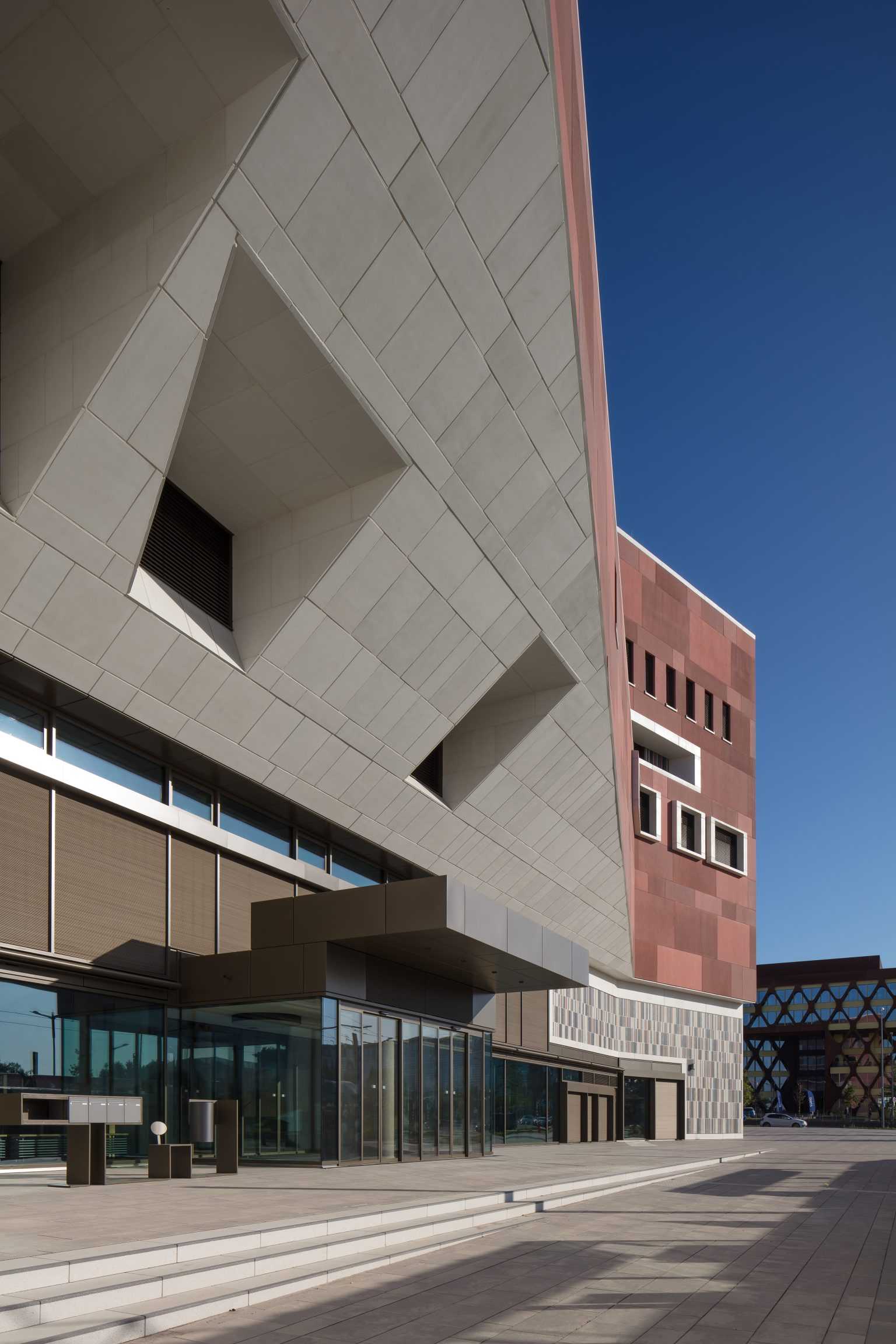

















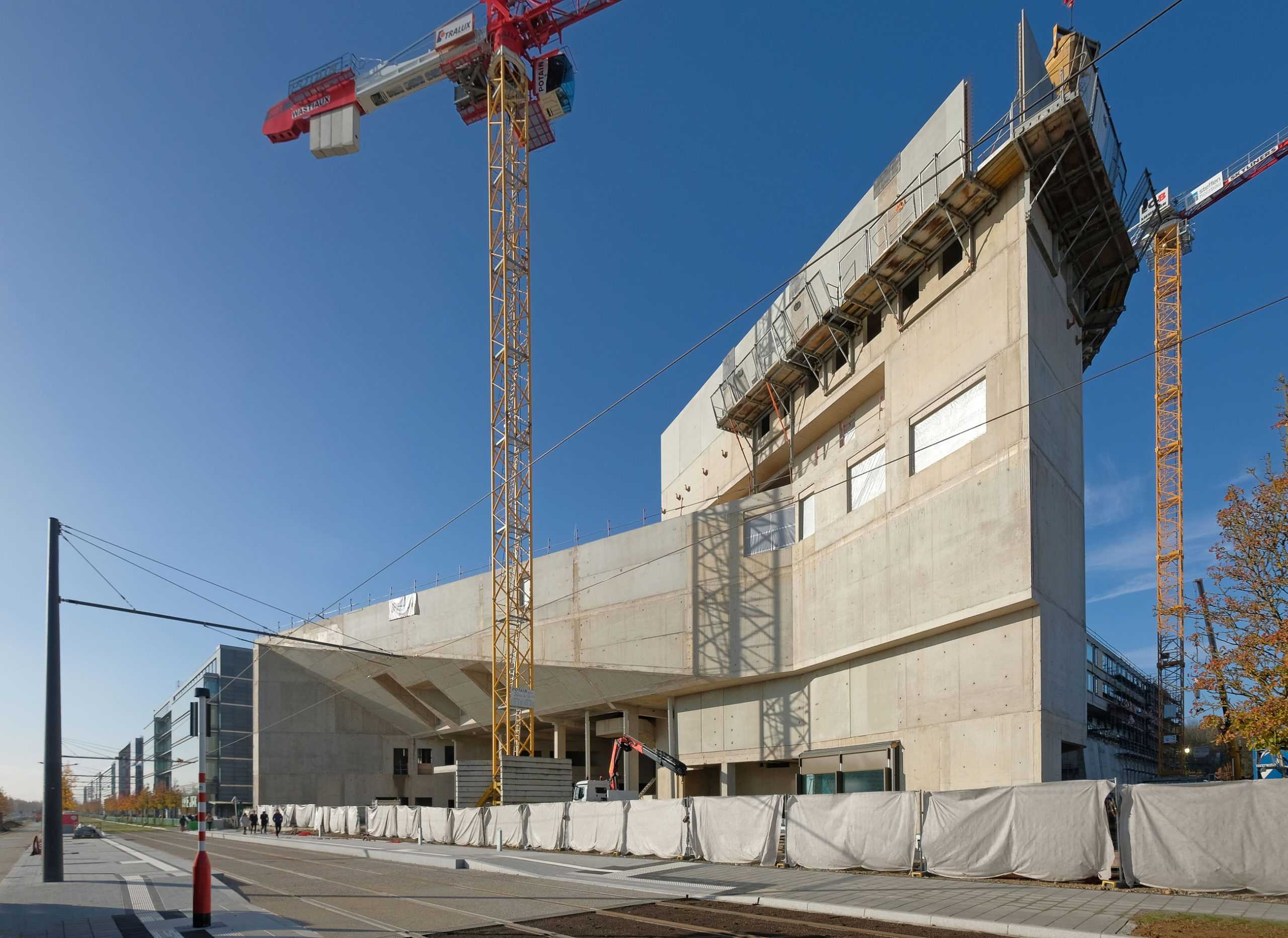

City Hall Korça
TYPOLOGY: Public
COUNTRY: Albania
CITY: Korça
YEAR: 2019
PHOTOS: © Roman Mensing, Olgert Maxhe, BOLLES+WILSON
1) The conversion of the communist library on Bulevard Shën Gjergji was a parallel project to the construction of the (BOLLES+WILSON) New Library facing the new Cathedral Square. – These are all pieces of the puzzle that adds up to the BOLLES+WILSON Masterplan for the centre of the city of Korça.
2) The re-design introduced a new balcony to synthesise a previously uncomfortable Junction of marble columns and the white box upper floor. The perforated balustrade facilitates victorious football teams or the mayor addressing his public.
3) The four large windows to the balcony received new sliding sun screens. We are here only a stone’s throw from the BOLLES+WILSON 2014 Red Bar in the Sky.
4) The communist library was on the site of a demolished church – the façade geometry of this absent building had already been embossed into the paving (rotated on its ground line) with the pedestrianizing of Boulevard Shën Gjergji (BOLLES+WILSON Masterplan stage 1). This embedded history is now to be read in lasered text in Albanian (black on white) or English (white on black) on the new entrance ramp wall (the axis of rotation for the reanimated church geometry).
5) The old library interior is emptied for a spacious ‘one stop shop’ (public information). Here existing tiles and the wide span coffered ceilings are thematized (colour + integrated air outlets), the existing theatrical stairs gets a pink backdrop with scattered windows. (6+7)
6) Here existing tiles and the wide span coffered ceilings are thematized (colour + integrated air outlets).
7) The existing theatrical stairs gets a pink backdrop with scattered windows.
8) Part of the entrance level floor was removed for a stair that leads down to the new council chamber.
9) White public information islands are divided from individual offices by a lightweight glass wall.
10) Dividing – the council chamber from the Lobby. A translucent screen of green wine bottles was inserted between existing structural beams.
11) The floor slab removed for the council chamber creates a grand salon for political debate. Councillors desks are white, the visitors balcony pink (12+13)
14) Wine bottles set in mortar give an underwater ambience to council chamber.
15) Their open necks function as acoustic absorbers.
16) Councillors’ benches focus on the mayor’s desk, this is backed by a wooden screen with the double eagle Albanian national symbol.
17) Our client, the mayor Sotiraq Filo
18) A high clearstory window lights from the side
19) Next door to the new city hall an existing building (nineteenth century eclecticism) has been carefully restored for the offices of the mayor and his staff. It connects directly to the council chamber via a submerged tunnel (steps above). (19)
20) Within the mayors building – no architectural interventions were needed. It only remained for BOLLES+WILSON to apply a radical polychromy. (20,21,22,23)



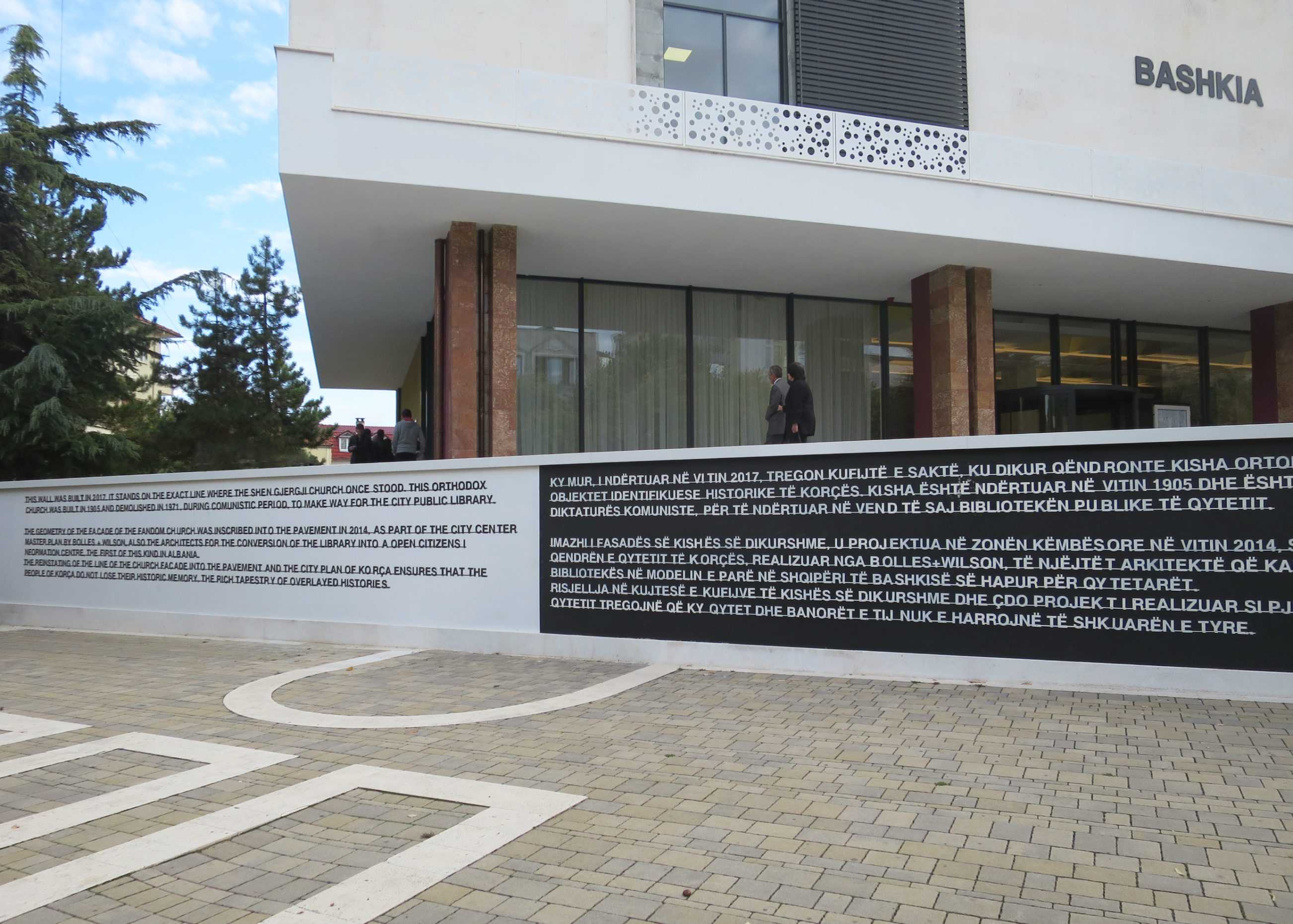













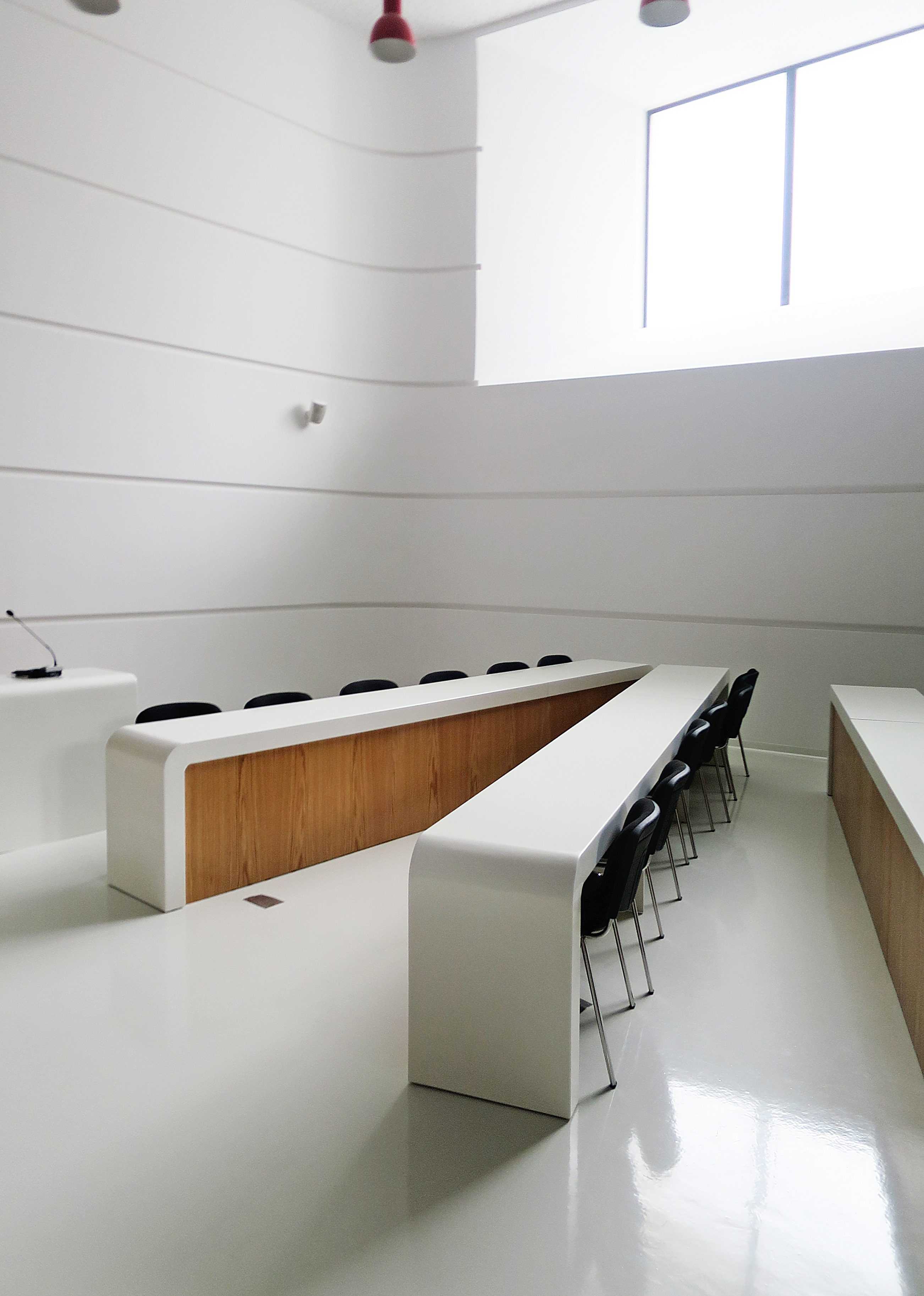



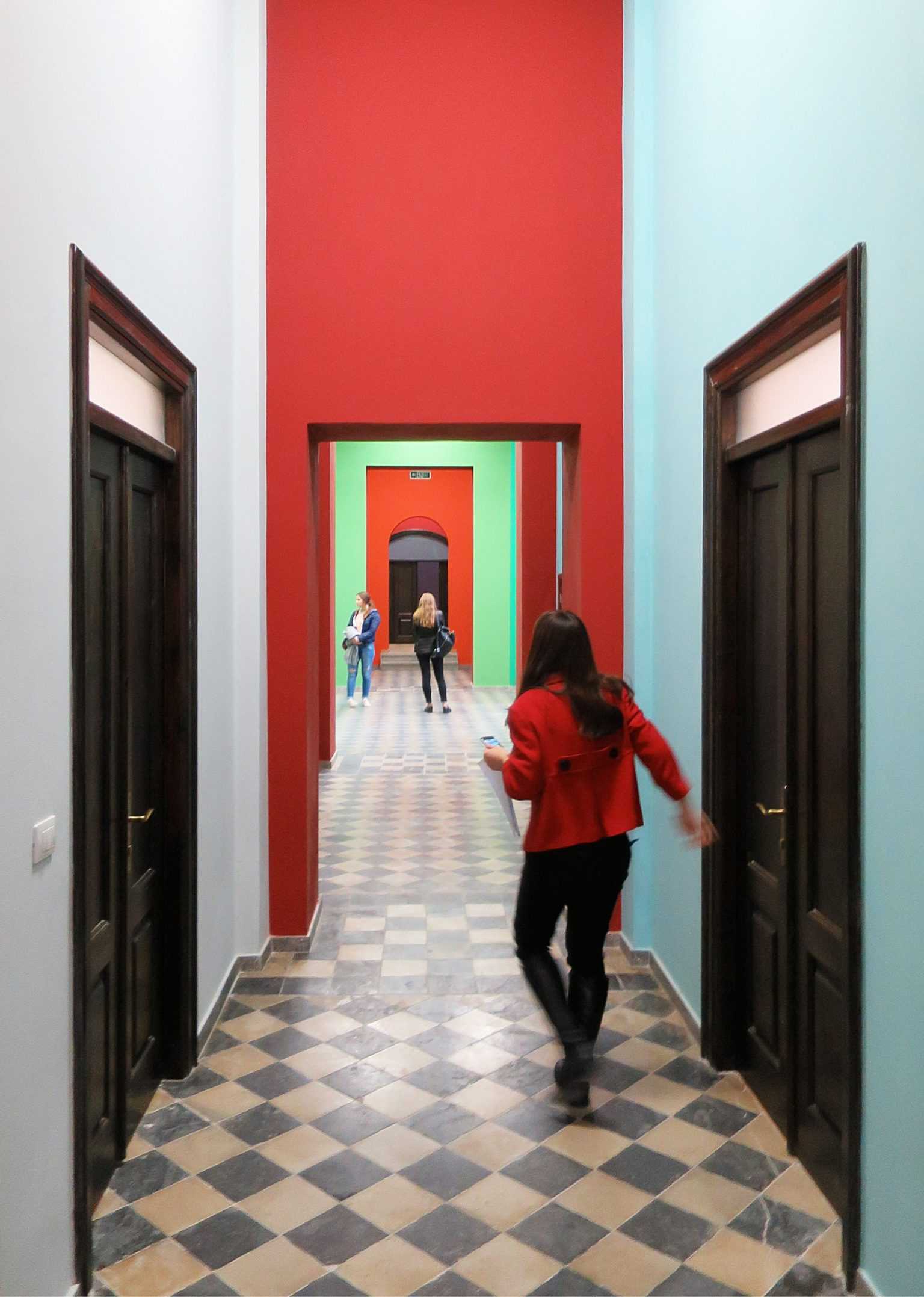
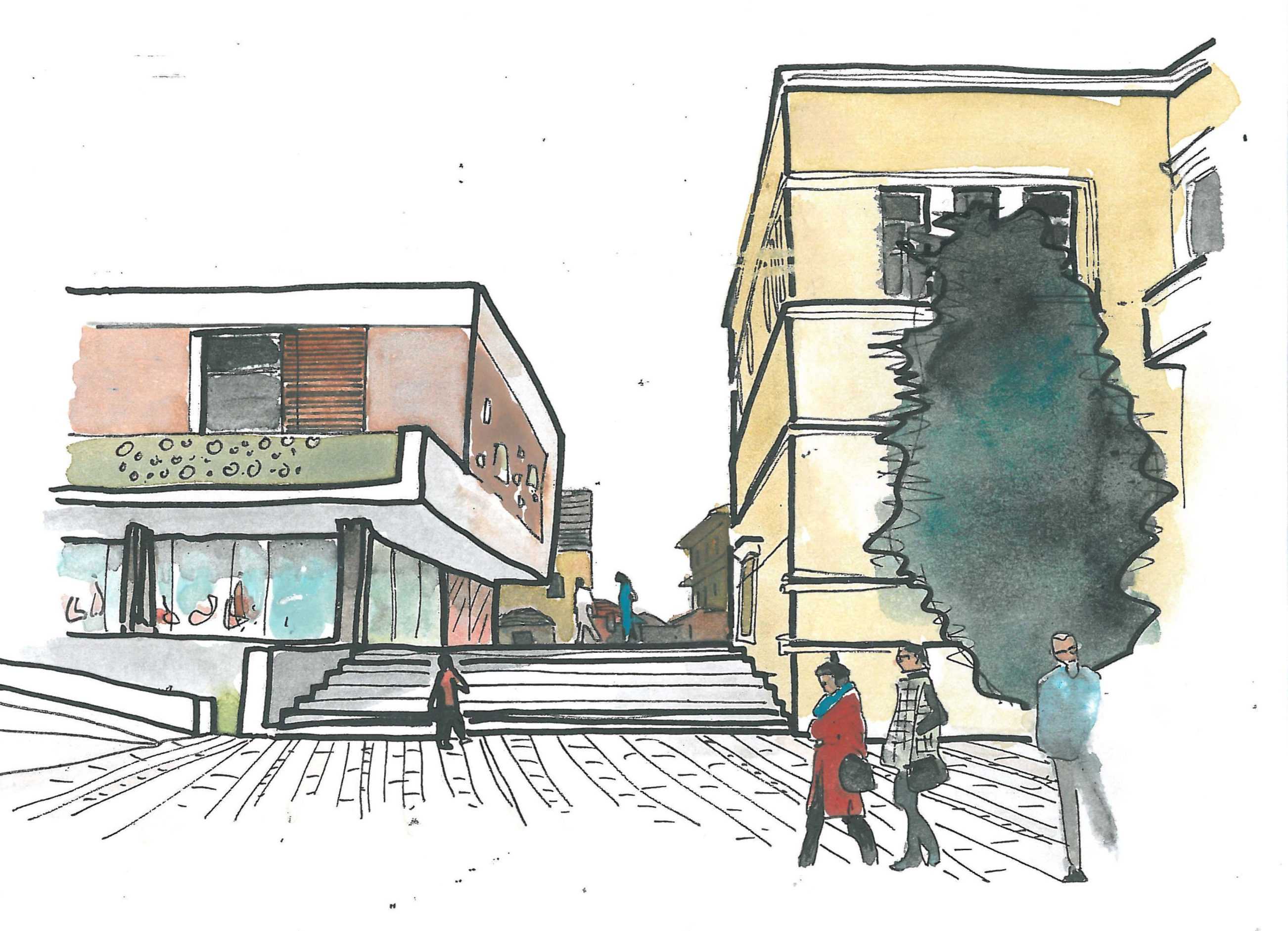

Studios Frobenstraße 1
TYPOLOGY: Residential
COUNTRY: Germany
CITY: Berlin-Schöneberg
YEAR: 2020
GFA: 2.300 m2
CLIENT: Frobenstraße 1 GbR
AWARDS: BDA Preis – nominated
PHOTOS: © Aya Schamoni
INTERIOR APARTMENT 9: studio f1 (Jack Wilson, Chris Geseke)
Finished in late 2020 Frobenstraße 1 offers for renting 11 variously sized apartments and 2 commercial units in an area of fashionable shops and galleries (Potsdamer Straße), street prostitution, social housing and huge investor driven developments of owner occupied apartments.
Frobenstraße 1 is a chorus member. It is not a Primadonna that steps out to front stage. The choreography of urban choruses is the Großstadt-DNA of Berlin, Paris or Barcelona. It defines the street line and the eaves line. In Frobenstraße 1 the upper facade limit is articulated with a recessed shadow line, a modest but significant detail.
The well behaved chorus anticipates a fictive future block-perimeter conclusion to the south, where there is now a Kindergarten with luxurious trees. Here the pink side wall (fire wall) presents itself for the kids with its giant footprint graphic.
Unlike the Bel étage of a Paris House the first floor here has the standard 3,10m room height, but its special relation to the street is prescribed by the delicate and continuous railing.
The window composition to the street describes the internal layout where three apartments break out of the standard, but generous room height to 4,80m and 6,50m. The grey facade has therefore aspirations to be read as a palazzo, with the projecting penthouse window playing the classic attica.
The garden facade is more domestic, balconies meandering out for afternoon sun and individual planting.
For the interior communal stair and lift black and white tiles dignify homecoming.
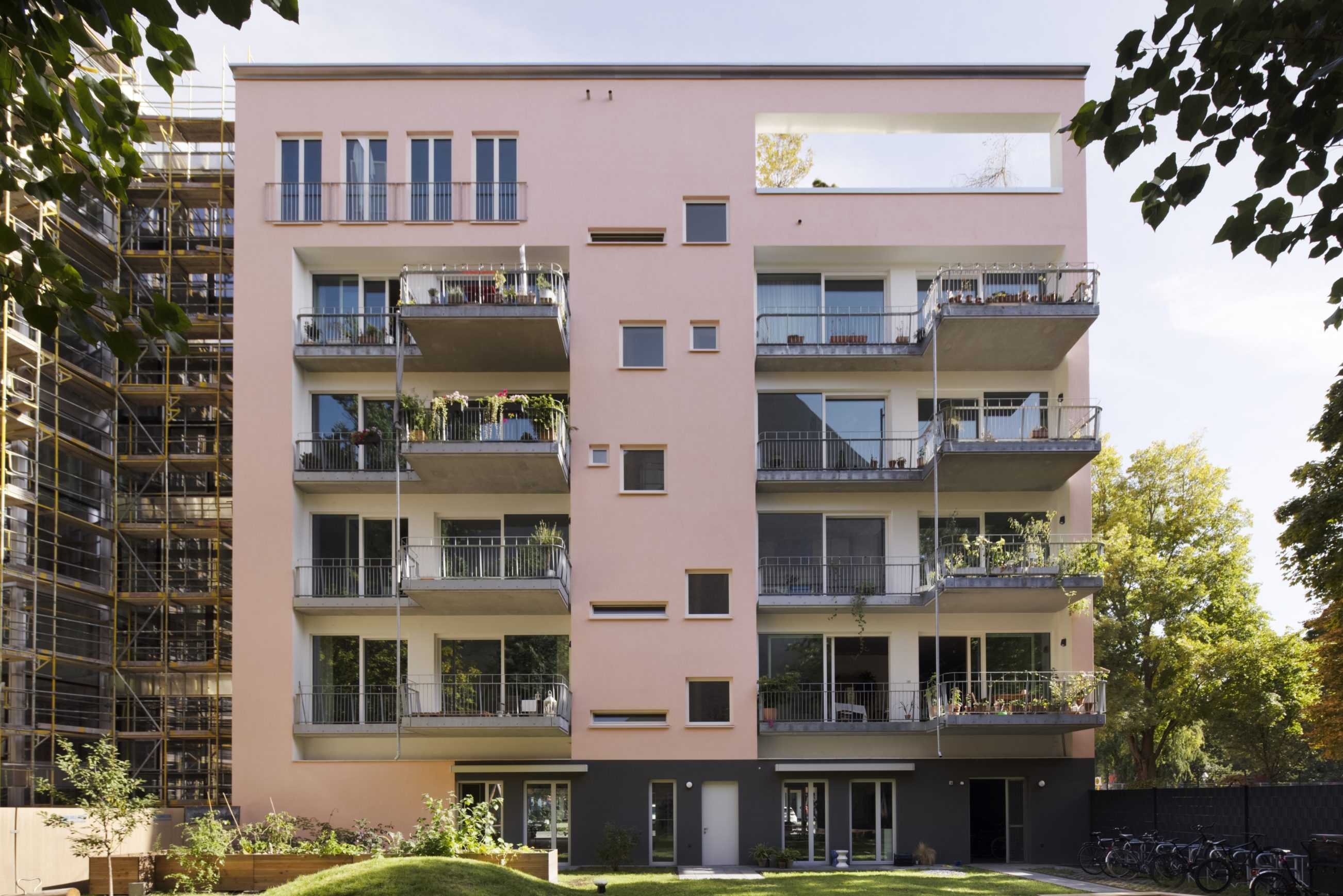
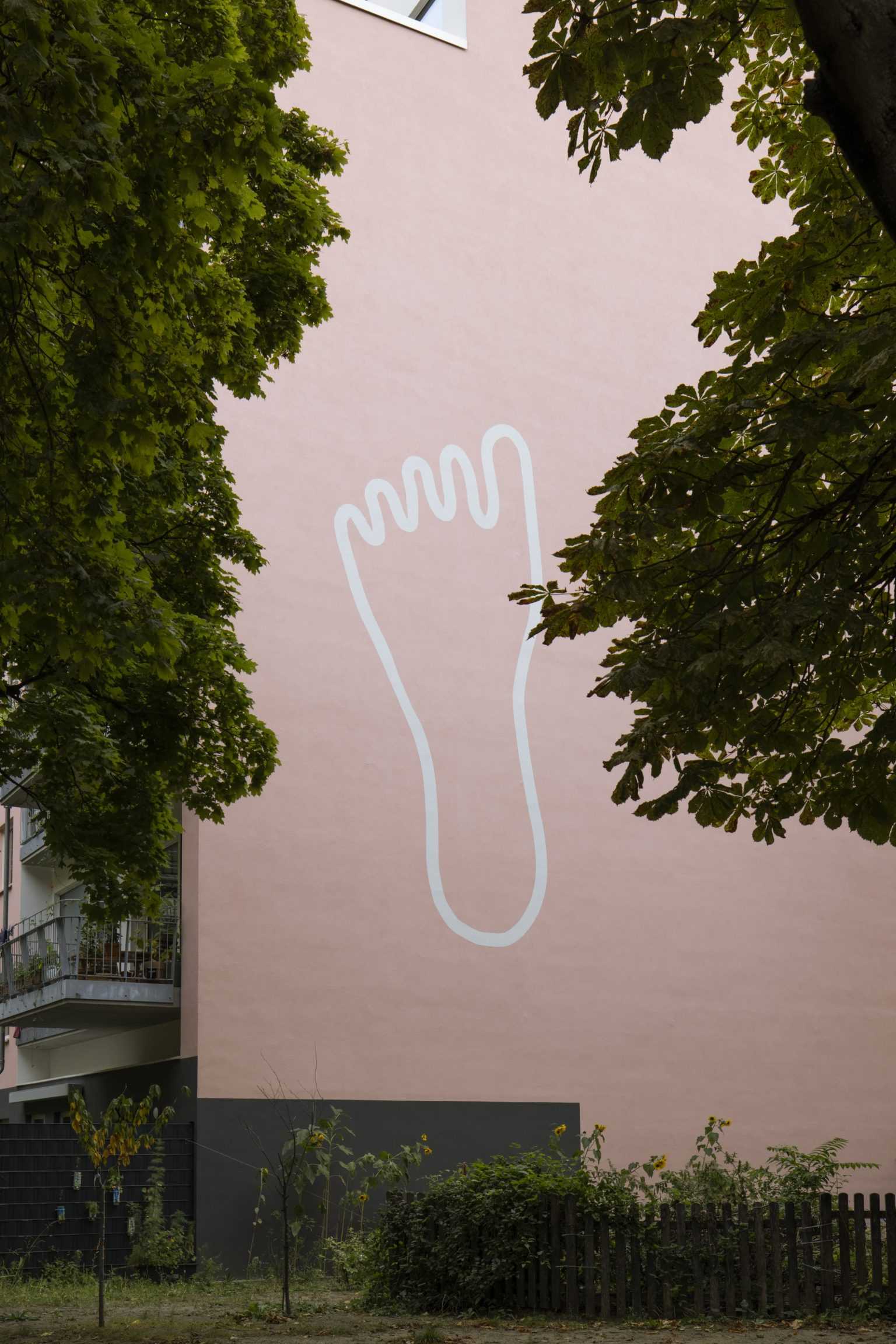

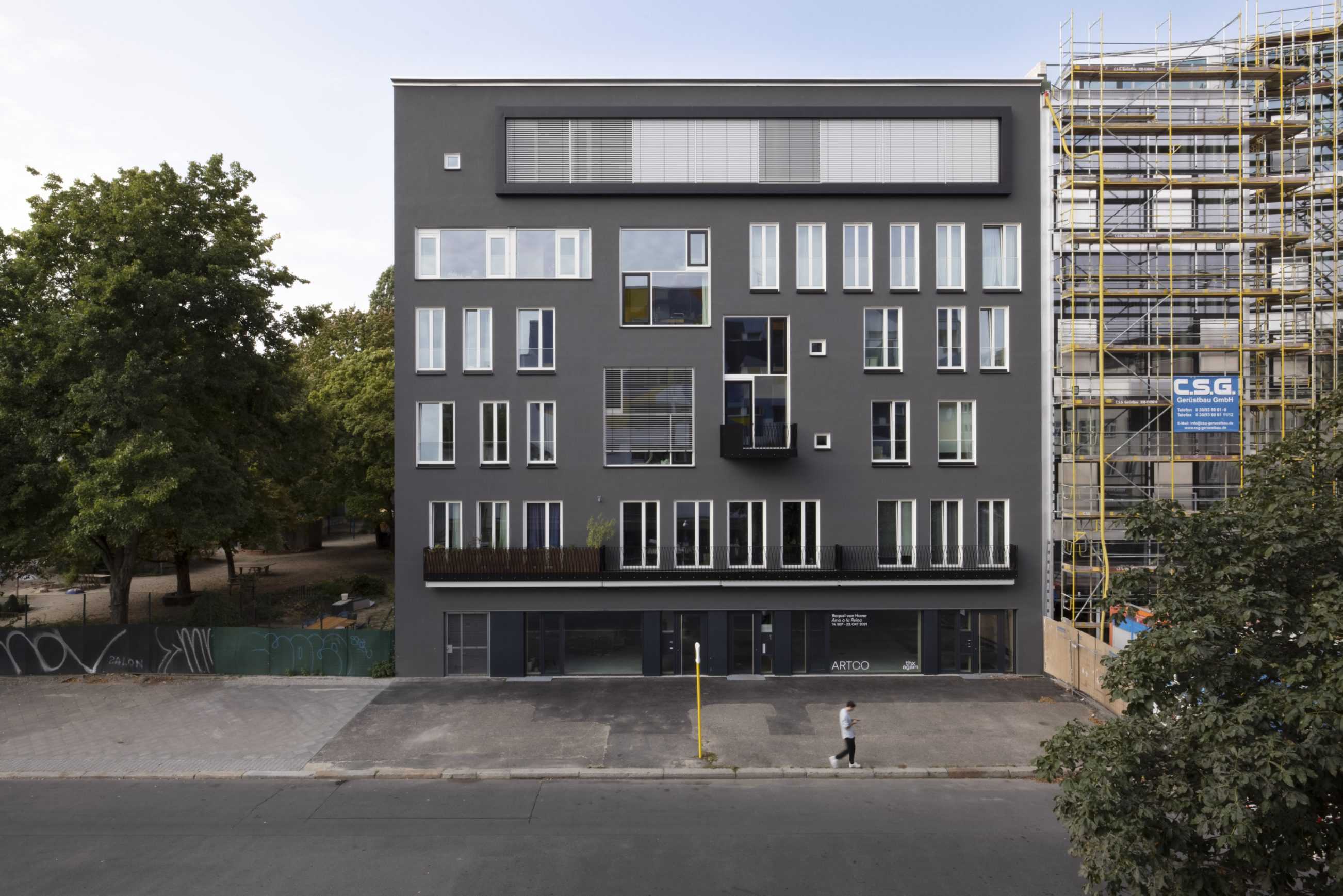







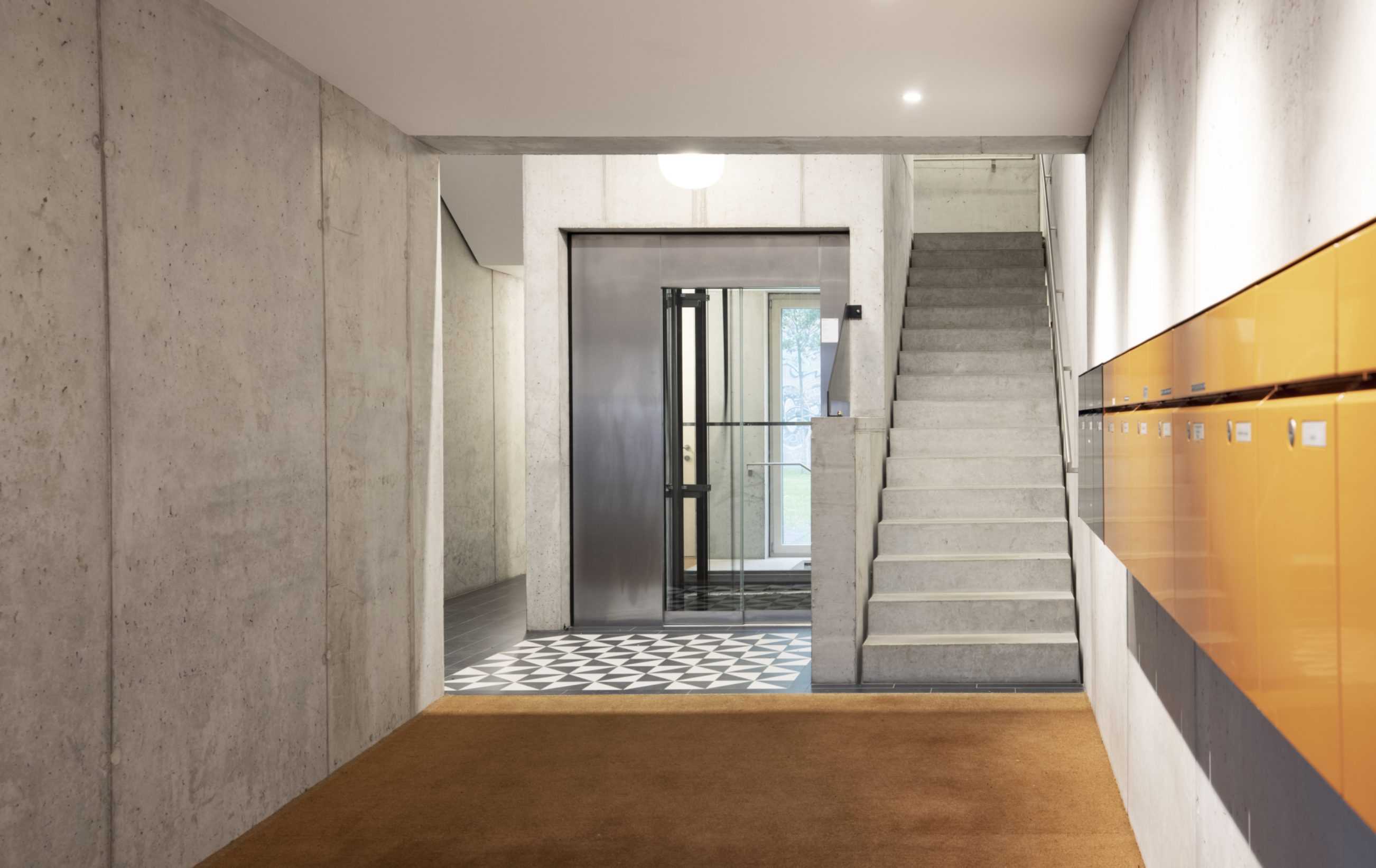










Leo’s Gate Coworking und Coliving
TYPOLOGY: Office / Residential
COUNTRY: Germany
CITY: Münster
YEAR: 2020
GFA: 8.140 m2
CLIENT: Leos Gate GmbH & Co. KG – New work and -living
STATUS: In progress
Leo’s Gate is the fourth building block on the site of the former ice rink in Münster. It marks the entrance to the Science Quarter from Steinfurter Strasse. The mixed use with catering units on the ground floor, flexible Coworking Spaces and Coliving Modules on the upper floors is multifunctional.
Different wooden constructions are planned depending on use and requirements. Floor-to-ceiling timber trusses with light ribbed ceiling slabs are used in the cantilevered Coworking areas. The 45 residential units are delivered as completely prefabricated and furnished wooden modules and are stacked over four floors.
All facade elements are designed in a uniform shade of red, which blends in with the entire ensemble of the historical Leonardo campus and the new brick buildings in the area.

